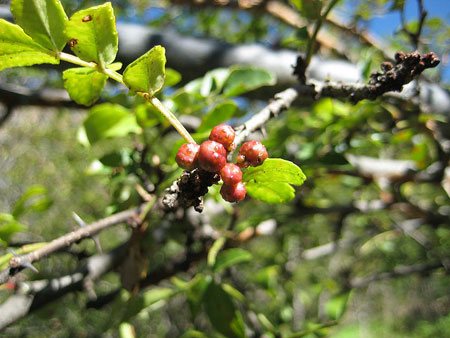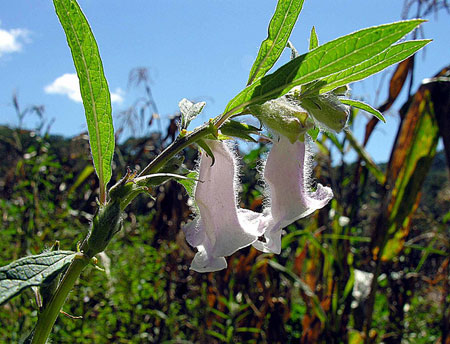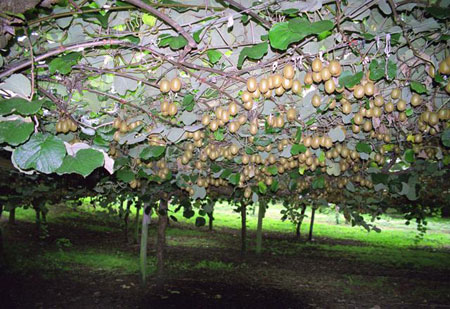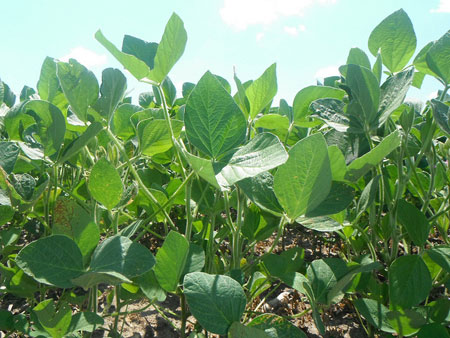| Home > China Feature |
Where Common Chinese Food Condiments Actually Come From

1) Sichuan Peppers
The Sichuan Pepper is the little peppercorn-esque thing in your Mala Soup or other Sichuan-style dish. We have all experienced the mouth-numbing sensation of biting down on one of these little devils, but what are they exactly? Actually, Sichuan peppers have no relation at all to either the black pepper or chili pepper. They are, in fact, a part of the citrus family. The Sichuan pepper grows on small trees that resemble those that grow lemons and are indigenous to Sichuan Province. The tree sprouts red berries, of which the husk is used for cooking and which is what we see in our dish when we taste the distinctive flavor of this aniseed-anesthetic.

2) Sesame
Sesame sauce is the magical brown liquid that accompanies your hot pot and makes everything it touches creamy and delicious. Sesame seed balls keep you going through the long, cold Chinese New year. But what is sesame? Despite predominantly growing in the summer, the sesame plant – which is usually 50-100 cm tall – is immune to drought. Originally indigenous to Africa and later India, the Sesame plant can now be found in most parts of the world. The plants sprout yellow or white flowers and bear a fruit which resembles a capsule in shape. Inside these capsules you find the tiny seeds we are so accustomed to seeing. China is third on the list of top sesame producers in the world but has the highest yield per hectare.

3) Kiwifruit
Not only is the kiwifruit delicious, but it is also one of the healthiest fruits known to man. Believe it or not, the kiwifruit has its origins in southern China. A native fruit of the region, it was once used as medicine for children and old ladies. It wasn’t until the beginning of the twentieth century that it made its way to New Zealand and from there they made their reputation known across the world as the fruit we know it as today. During its early days in New Zealand the fruit was called the Chinese gooseberry. However, in 1959 it was renamed after the Kiwi, New Zealand’s national bird, because both are small, brown and furry. The kiwifruit actually grows on a vine and, much like grape vines, also requires pruning.

4) Soy Bean
Can you imagine Chinese cuisine without soy sauce, soy milk and tofu? Well, they all come from the soy bean which is a native of East Asia and is a part of the legume family; other members in this plant family include peas, peanuts and lentils. The little bean was so important in ancient Chinese history that it was designated as one of the five sacred plants by emperor Shennong, who is said to have tasted thousands of new plants in order to find new food sources. Soy beans are found inside hairy pods which grow on small plants that can be up to 2 meters tall. Soy beans are one of the primary sources of protein in East Asia.
These little facts about the plant origins of Chinese food condiments aren’t necessarily going to make your eating experience in China any better, but it’s always good to know where things come from and what exactly it is that you’re eating. Learning more about a country that you’re going to be spending large amounts of time in is important, and very little in China is more important than food.
Art
 more
moreChina Beijing International Diet ...
Recently, The hit CCTV documentary, A Bite of China, shown at 10:40 ...

Exhibition of Ancient Chinese Jad...
At least 8,000 years ago, Chinese ancestors discovered a beautiful...

Longmen Grottoes
The Longmen Grottoes, located near Luoyang, Henan Province, are a tr...

Custom
 more
moreWeb Dictionary
Martial Arts
Tai Chi Master Class Held in Moscow
MOSCOW, June 15, 2016 (Xinhua) -- Students learn from Shaolin ...
Celebriting 70 years' efforts in restoring Mogao...
Work is being carried out at the restoration site of cave No 98 a...
Hong Kong Children's Symphony performs in Seattle
Under the theme of Tribute to the Golden Age, a concert featuring a ...





 print
print  email
email  Favorite
Favorite  Transtlate
Transtlate 








